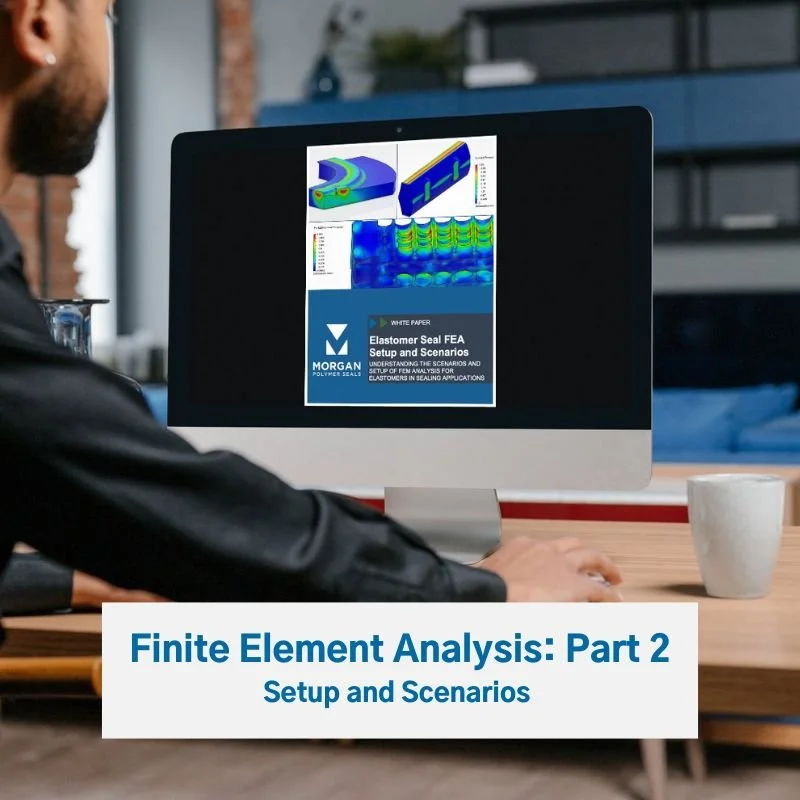FEA White Paper, Part 2: Setup and Scenarios
Part 2 of our white paper for Finite Element Analysis
The white paper focuses on the proper setup and scenarios for performing Finite Element Analysis (FEA) on elastomer seals.
Here’s a summary of what you’ll find in part 2 of this white paper, which we originally published as a three-part series in 2022:
FEA Methods
1. Implicit Method: Used for static or quasi-static analyses, assuming no time-related effects like movement or inertia. It's more efficient but may struggle with highly dynamic or non-linear cases.
2. Explicit Method: Better for highly dynamic situations, the explicit method calculates small time increments and tracks the movement of nodes. While computationally intensive, it can handle complex behaviors like high deformation.
FEA simulations focus on two primary conditions:
1. Least Material Condition (LMC): Evaluates the elastomer in its smallest state, ensuring adequate contact pressure.
2. Maximum Material Condition (MMC): Analyzes peak stress and strain in fully compressed states to ensure the seal can withstand maximum forces.
Contact Width and Pressure:
Contact width and pressure are critical for proper sealing. FEA can simulate different seal designs to ensure sufficient contact pressure and width, essential for effective sealing, especially in high-pressure or fluid applications.
Mating Part Deformation
Mating parts (like metal or plastic components) may deform under the stress of the seal. FEA can also simulate these deformations to ensure the seal maintains contact pressure despite changes in the surrounding parts.
Meshing and Scenario Considerations
The meshing process breaks down the part into nodes and elements. Two common element types are:
1. Hexahedron (Hex) Elements: More accurate but require more time and effort.
2. Tetrahedron (Tet) Elements: Faster but less accurate, especially in complex regions.
Mesh resolution and element types significantly affect both the accuracy and the computational time of FEA.
Click the link below to download the entire second part of this three-part series on Finite Element Analysis.
To read the other parts of this series, check out these links:
FEA White Paper Part 1 -material properties
FEA White Paper Part 3 - results


